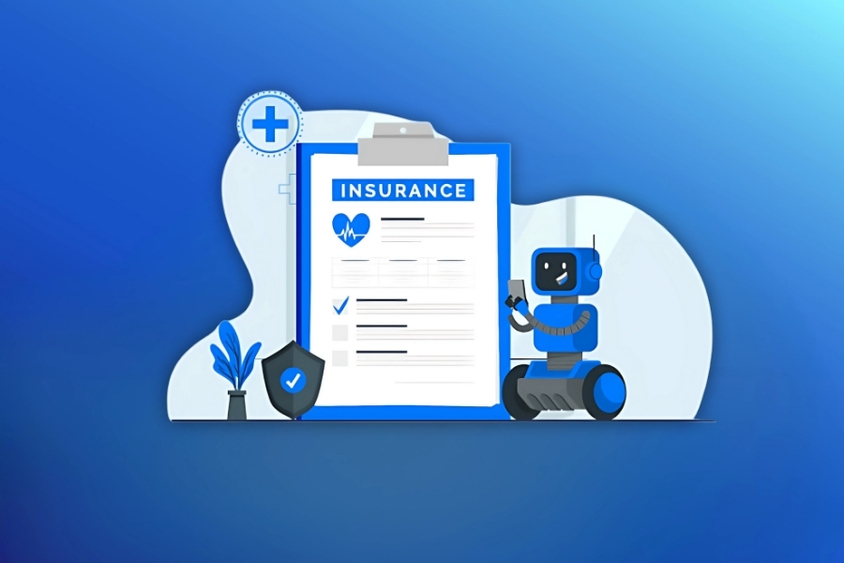Proactive vs. Reactive Compliance: How AI Shifts the Game for Insurance Teams
In Insurance, compliance is non-negotiable. Yet for many carriers and third-party administrators (TPAs), the approach remains reactive—catching errors after filings are submitted, addressing regulatory issues only once flagged, and scrambling to respond to objections. This backward-looking model is no longer sustainable in a market that demands speed, accuracy, and transparency. Artificial Intelligence (AI) is redefining how insurance teams approach compliance. Intelligent systems now allow insurers to shift from reactive firefighting to proactive control—detecting red flags before filings go out, reducing regulatory friction, and turning compliance into a strategic advantage. Below, we break down how this shift happens—and why insurance teams embracing AI are gaining an operational edge. The Reactive Reality: Filing First, Fixing Later Most mid-sized insurance firms still rely heavily on manual processes to manage regulatory submissions. Whether it’s multi-state filings, class code justifications, or audit documentation, teams often assemble data from disparate sources, finalize it under time pressure, and submit without a full compliance check. The consequences are clear: Teams are stuck in a loop—responding after the fact, tracking errors manually, and hoping to fix what gets flagged. This puts unnecessary strain on compliance staff and slows business momentum. The Proactive Pivot: Intelligent Systems at Work How AI Moves Compliance from “Firefighting” to Future-Proofing:Compliance has long been a reactive game—auditors and insurers scrambling to fix errors after regulators flag them, policyholders dispute premiums, or payroll discrepancies spiral into financial losses. AI flips this script entirely. By embedding intelligence into every stage of the audit lifecycle, compliance “shifts left,” catching risks before they escalate. Here’s how intelligent systems are rewriting the rules: 1. Pre-Submission Validation & Formatting: Stop Errors at the Door AI doesn’t just process data—it understands context. Modern systems now integrate regulation libraries that apply state-specific logic (e.g., California’s unique workers’ comp codes vs. Texas’s payroll thresholds) to pre-screen every submission. How It Works: Impact: A third-party administrator (TPA) reduced submission rejections by 92% in 6 months by automating pre-checks, slashing rework time and accelerating approvals. 2. Real-Time Error Detection: From Static Checklists to Dynamic Safeguards Traditional compliance relies on manual checklists—rigid, time-consuming, and blind to nuanced risks. AI introduces context-aware error detection that adapts to evolving regulations and business contexts. AI in Action: Case Study: An insurer avoided a $150K penalty by catching a misclassified roofing crew in real time—a mistake that previously would have gone unnoticed until an audit. 3. Learning from Every Filing: AI That Grows Smarter with Every Interaction The true power of intelligent systems lies in their ability to learn. Each submission, adjustment, and regulatory feedback loop trains AI models to anticipate future risks and refine compliance logic. The Feedback Flywheel: Result: A regional carrier cut repeat compliance errors by 68% year-over-year, turning audit processes into a competitive differentiator. Case in Point: Reducing Multi-State Filing Rework by 40% A mid-sized commercial insurance carrier operating across 12 U.S. states was struggling with a common but costly problem: inconsistent filing formats, delayed submissions, and high objection rates from state regulators. Each state had unique regulatory requirements, and the carrier’s compliance team was manually formatting, cross-checking, and updating each filing by hand. This often led to rework cycles that consumed upwards of 12 hours per file—and added weeks of delay to the policy lifecycle. To address the issue, the carrier implemented an AI-powered compliance solution that automated two critical layers: pre-submission validation and state-specific formatting logic. The system reviewed filings for structural errors, missing attachments, misaligned class codes, and data inconsistencies—before anything was submitted to regulators. For each jurisdiction, it applied tailored formatting templates and automatically flagged issues such as unsupported modifiers, policy version mismatches, or outdated policy language. Within one quarter of deployment, the impact was measurable and transformative. Filing rework dropped by 40%, freeing up compliance staff to focus on higher-risk submissions. Response cycles to state inquiries shrank dramatically, and regulatory objections declined. Most notably, the carrier improved its regulatory standing—earning a reputation for timely, clean filings. Internally, compliance staff reported reduced stress and more time to participate in strategic policy planning alongside underwriting leaders. What began as a tactical fix evolved into a cultural shift toward smarter, more scalable operations. Snapshot: Before vs. After AI Implementation Key Area Before AI Implementation After AI Implementation Average Filing Time Per File 12+ hours per file Reduced significantly (under 6 hours) Rework Volume High (40%+ of files required rework) Dropped by 40% Objection Rate Frequent state objections Marked reduction in objections Staff Workload Manual, repetitive tasks Freed up for higher-risk audits Regulatory Reputation Inconsistent; lagging standards Improved reputation with regulators Strategic Participation Minimal involvement in planning Active collaboration with underwriting The New Role of Compliance: From Gatekeeper to Growth Driver Traditionally, compliance was reactive—called in after the fact to review, file, or fix. This positioned it as a checkpoint, not a contributor. But AI is changing that. With intelligent systems built into the workflow, compliance is stepping into a more strategic role—one that adds value before problems arise. Here’s how AI is reshaping compliance: Regulatory Confidence Fewer objections = better reputation with state bodies and faster approvals Conclusion: Compliance Isn’t a Cost Center—It’s a Competitive Edge For too long, compliance has been treated as an afterthought—an administrative hurdle to clear after the real work is done. But in today’s fast-moving insurance landscape, that mindset is a liability. AI is giving compliance teams the tools to shift from reactive to proactive, from bottleneck to business enabler. Whether it’s catching misclassifications before they trigger penalties, validating filings before they reach regulators, or uncovering patterns that improve underwriting and audit strategy—intelligent systems are turning compliance into a core driver of operational excellence. The insurers leading this shift aren’t just avoiding risk—they’re gaining speed, improving accuracy, building trust with regulators, and freeing their teams to focus on strategy instead of rework. The future of compliance isn’t just about staying out of trouble. It’s about staying ahead. Now’s the time to invest in smarter systems, elevate your compliance function, and turn it into a source of growth,


